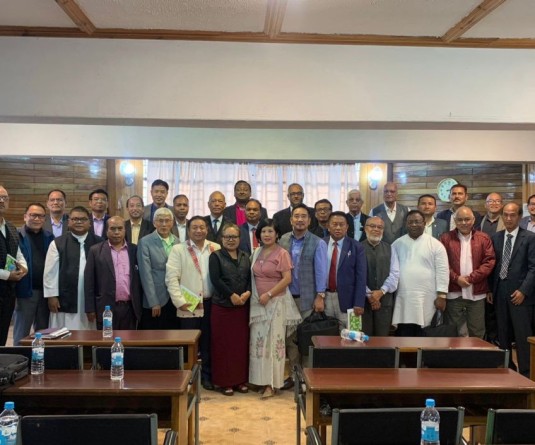
M Sashi Jamir
Associate Professor, Oriental Theological Seminary
First, a due acknowledgement to the Forum for Naga Reconciliation (FNR) for creating an environment wherein various but important Naga social and political organizations could come together and deliberate onNagas’ present scenario and future directions. Creating such platform requires vision, time, energy, and many other sacrifices and once again FNR has been able to quietly but efficiently endeavored to make things happen. There is no doubt that the intention of FNR is crystal clear which is to bring the Nagas together as one peoples, one nation.
Second, if one looks at the signatories of the Declaration of the Naga Collective Spirit it is at once comprehensive and penetrating at least in the paper. There are fourteen groups that signed the declaration: Nagaland Joint Christian Forum; People’s Democratic Alliance; Naga People’s Front; Naga Mother Association; Naga Women Union, Manipur; Naga Hoho; Naga Student Federation; United Naga Council; All Naga Students Association, Manipur; Rengma Naga Peoples Council, Assam; Naga People’s Movement for Human Rights; Consultative Committee for Just Peace; Naga Shisha Hoho; and Forum for Naga Reconciliation. These groups are comprehensive because they represent Nagas at every level: students, women, ruling, and opposition political groups, religious group, social activists, and people’s councils. These groups also represent Nagasgeographically: Nagaland, Assam, and Manipur. These groups in all sense represent the Nagas in every way and thus the declaration becomes (or should become) penetrative.
Third, the content of the Declaration contains themes on Naga unique history, Naga unity, statesmanship, and Naga future aspirations.The content is a brief description on the mentioned themes merely a page or two but relevant ones.
It goes without saying that the intention and meaning of this declaration is timely. However, the concern is the lukewarm (or it appears so) response from the general public on the declaration. If one seriously takes this declaration and especially the signatories this resolution has in it to revitalize Naga politics, society, and people in general. For instance, such declaration can have positive and pointed implications on the Indo-Naga talk. But why is the response as it is? One can only speculate. It can be because people are satisfied to concentrate on their daily livelihood. In other words, such declaration on Naga issue no longer excites them. Another conjecture could be that although the declaration is relevant the content might be vague for the common people to grasp anything concretely.
Whatever the speculations are it is clear that the signatories have an imperative task to carry out which is to educate and excite the common people to the point of action. The declaration alone will not accomplish anything unless and until the message trickles down to the common people. This suggests that issuing of the declaration though important is just the beginning. It is time to further strategize on how to bring the common people together under a vision and make them actually want to achieve the vision. Perhaps a way to accomplish this is to make their present meaningful in order for them to imagine creatively about their future. Signatories, the work has just started (congratulations!) and so you will have to continue to strive for the Naga cause and most importantly walk the talk.




